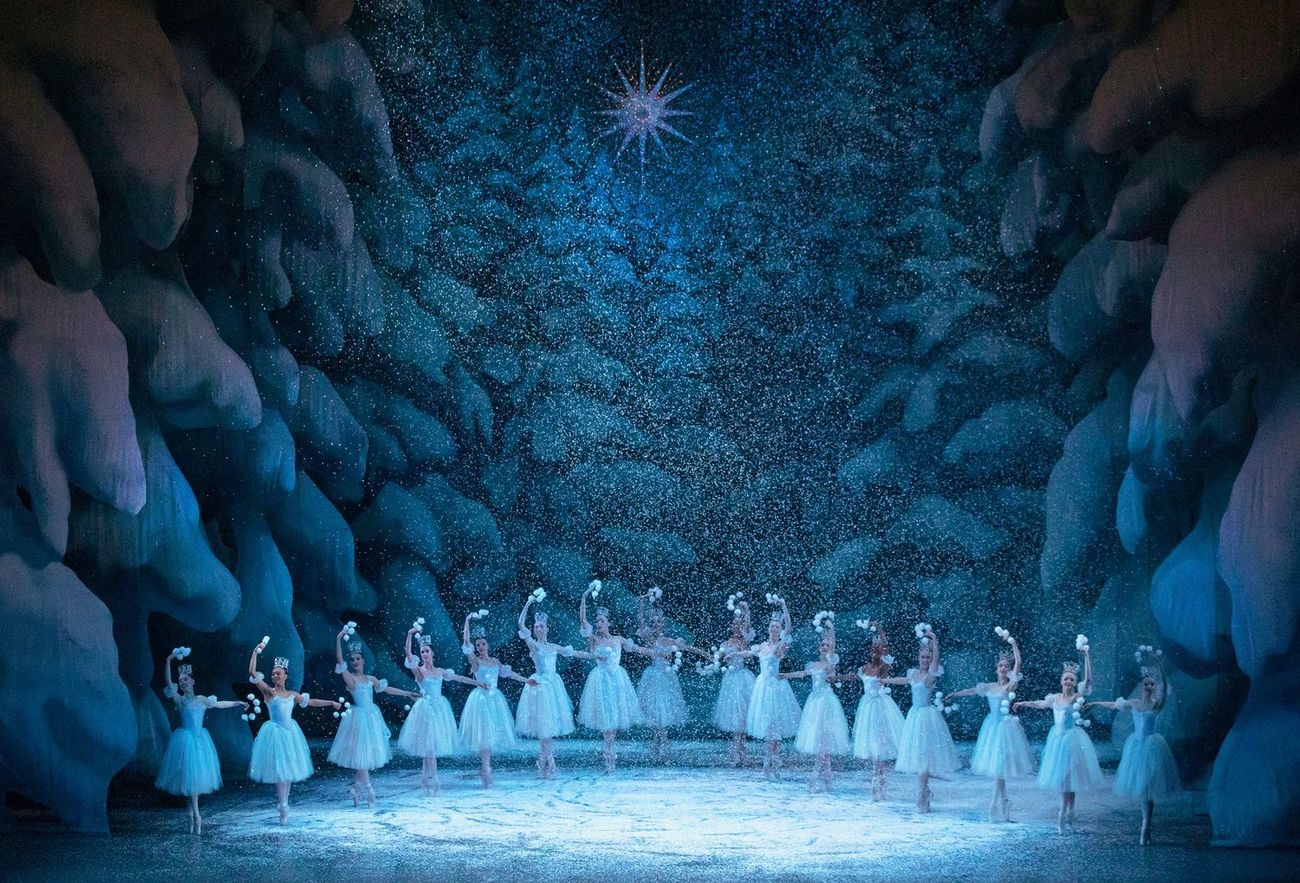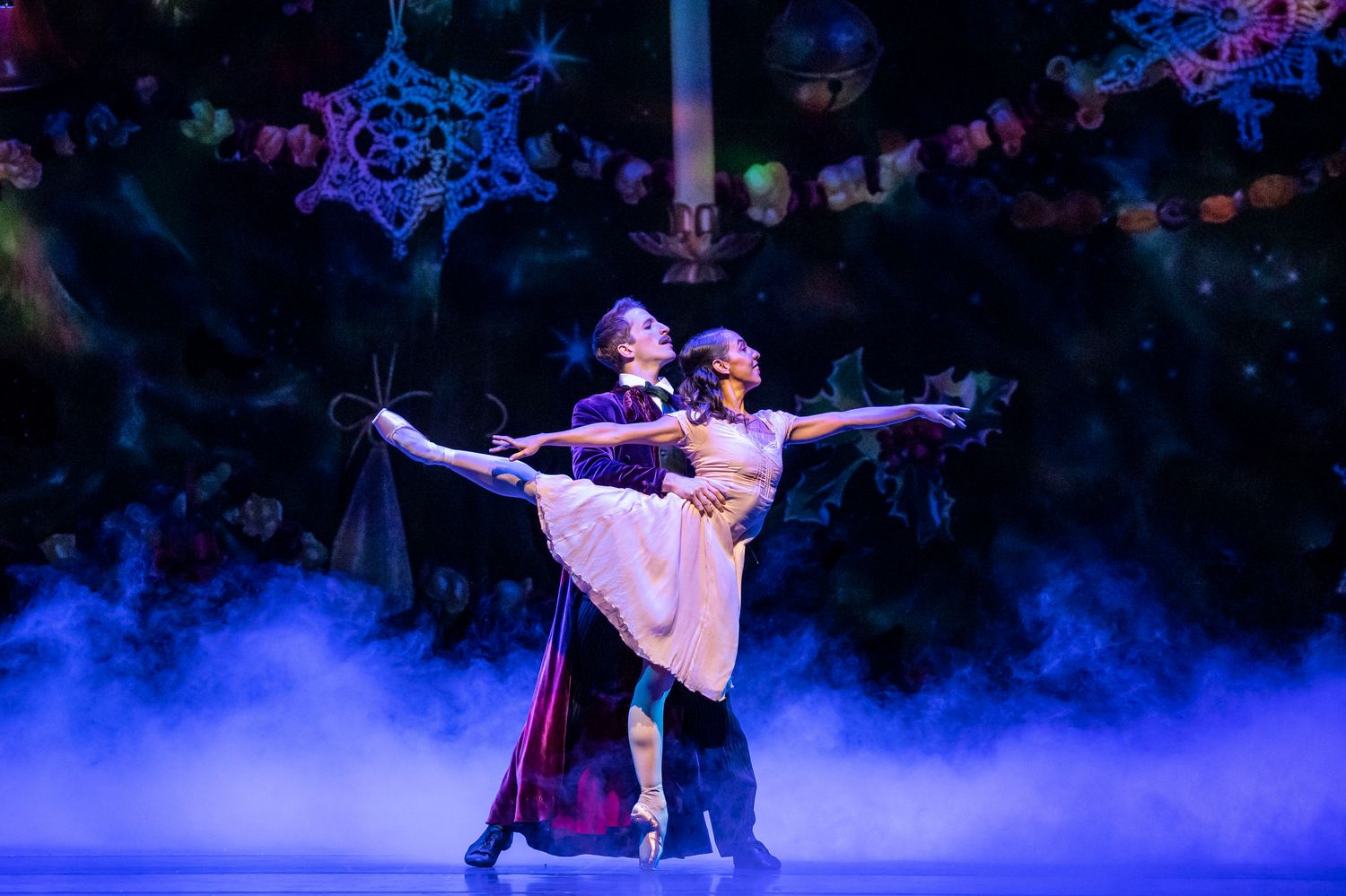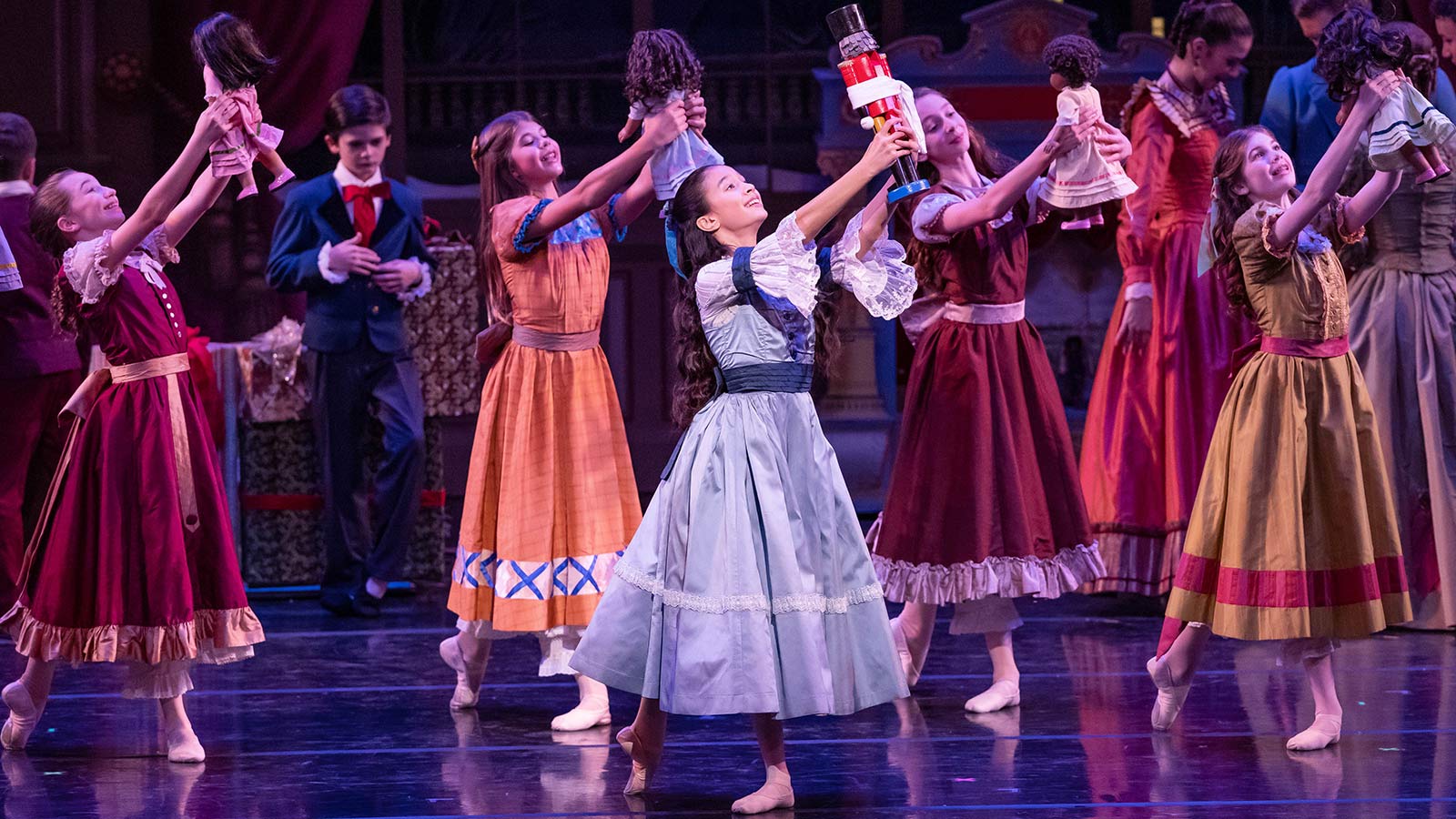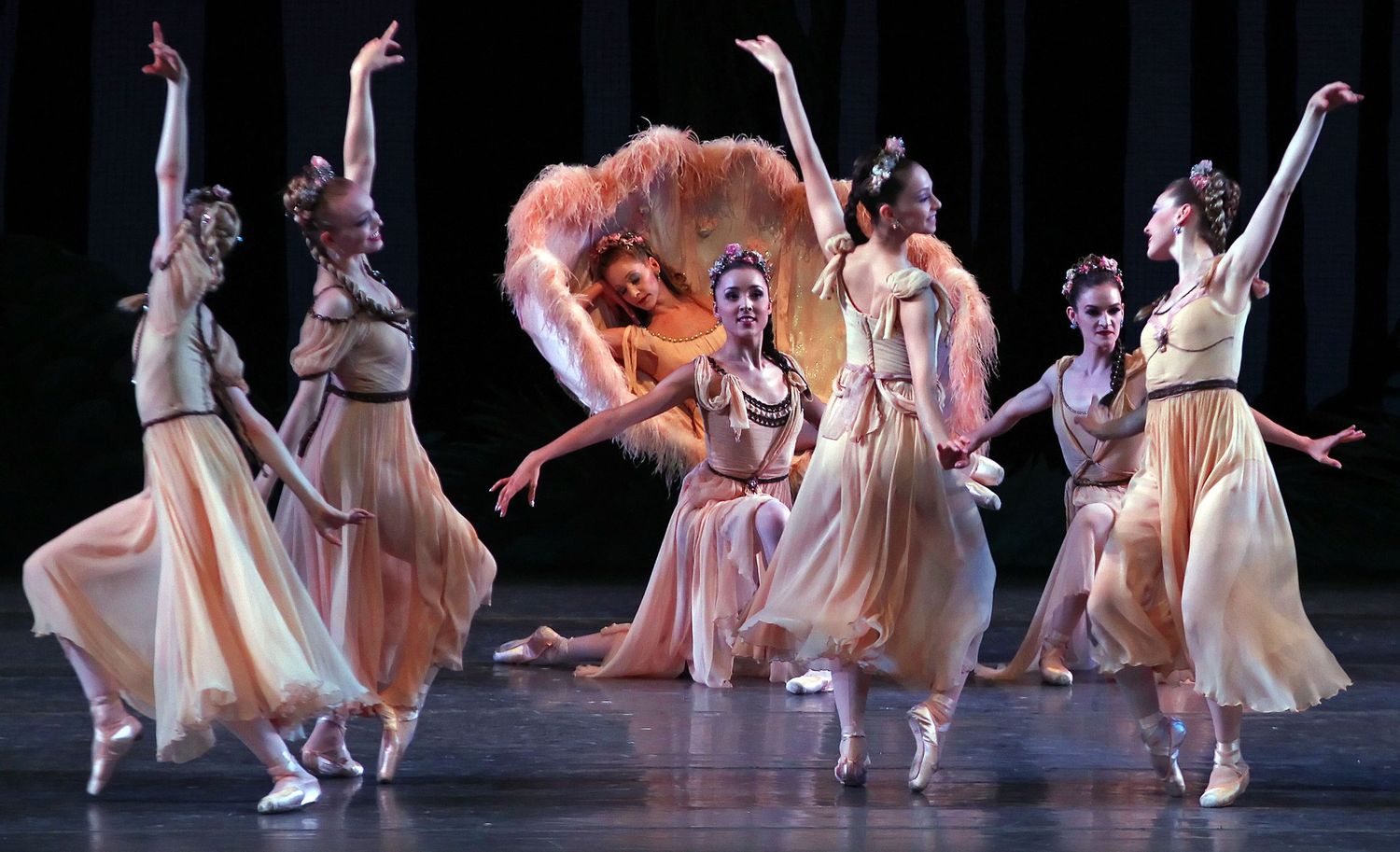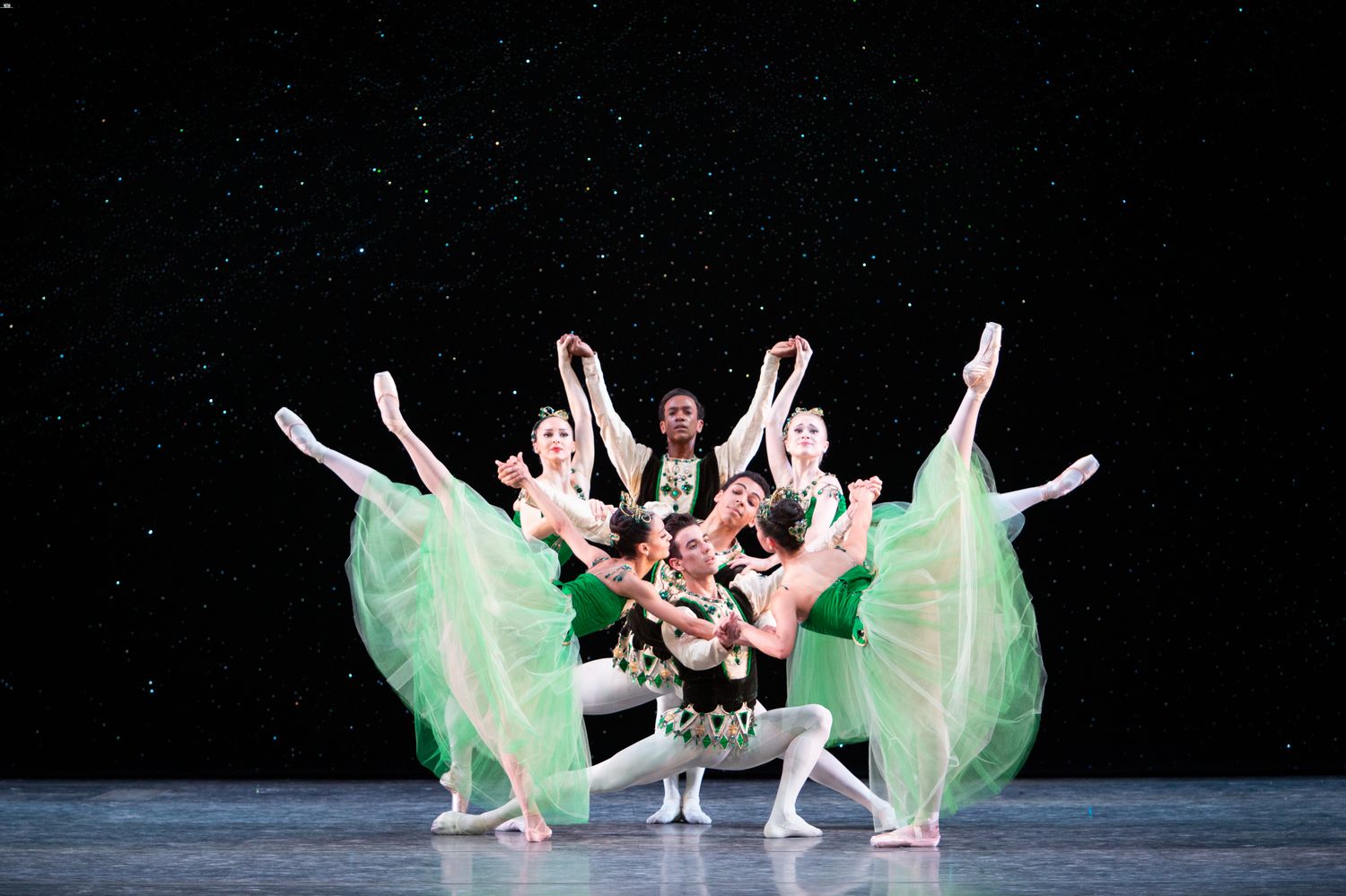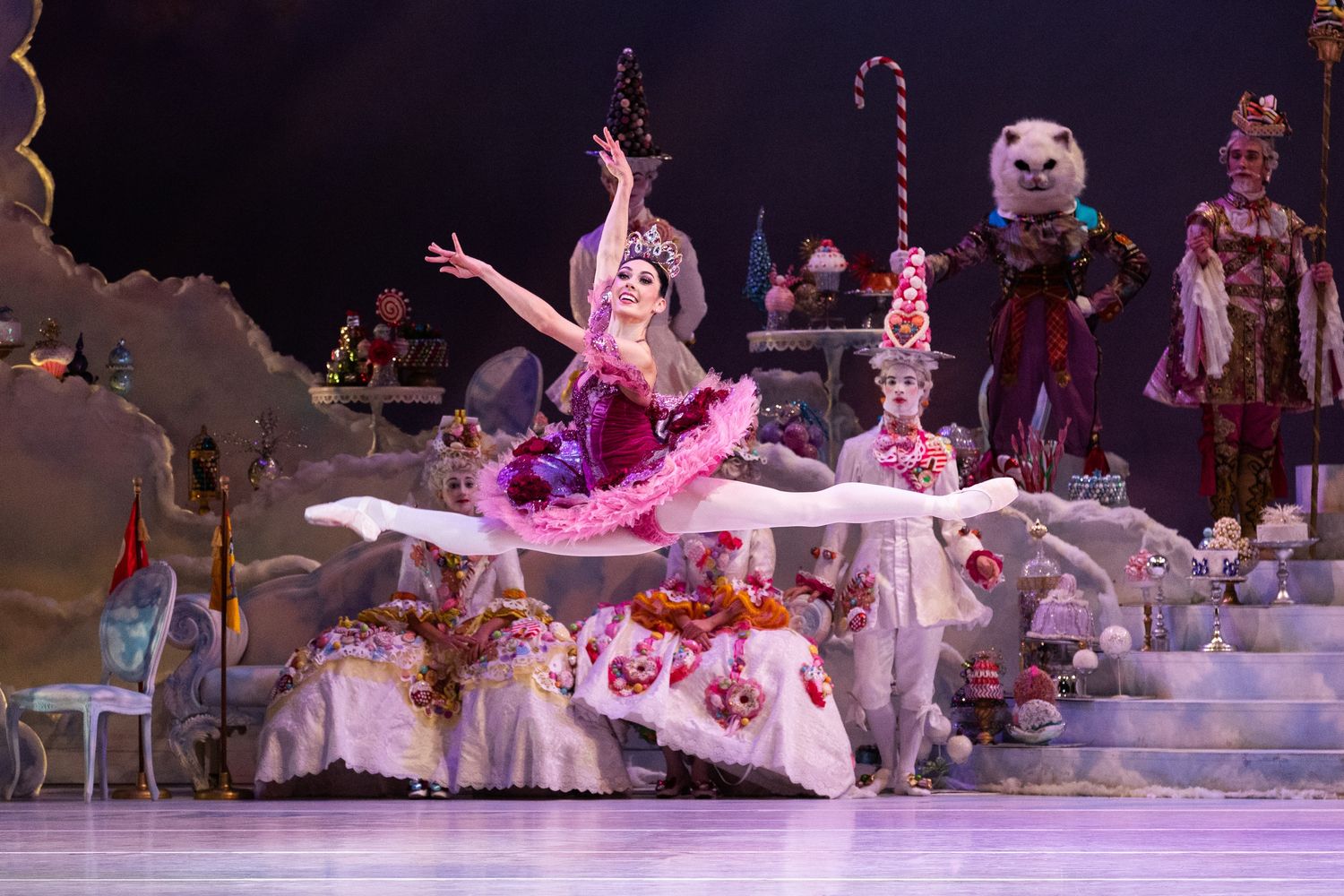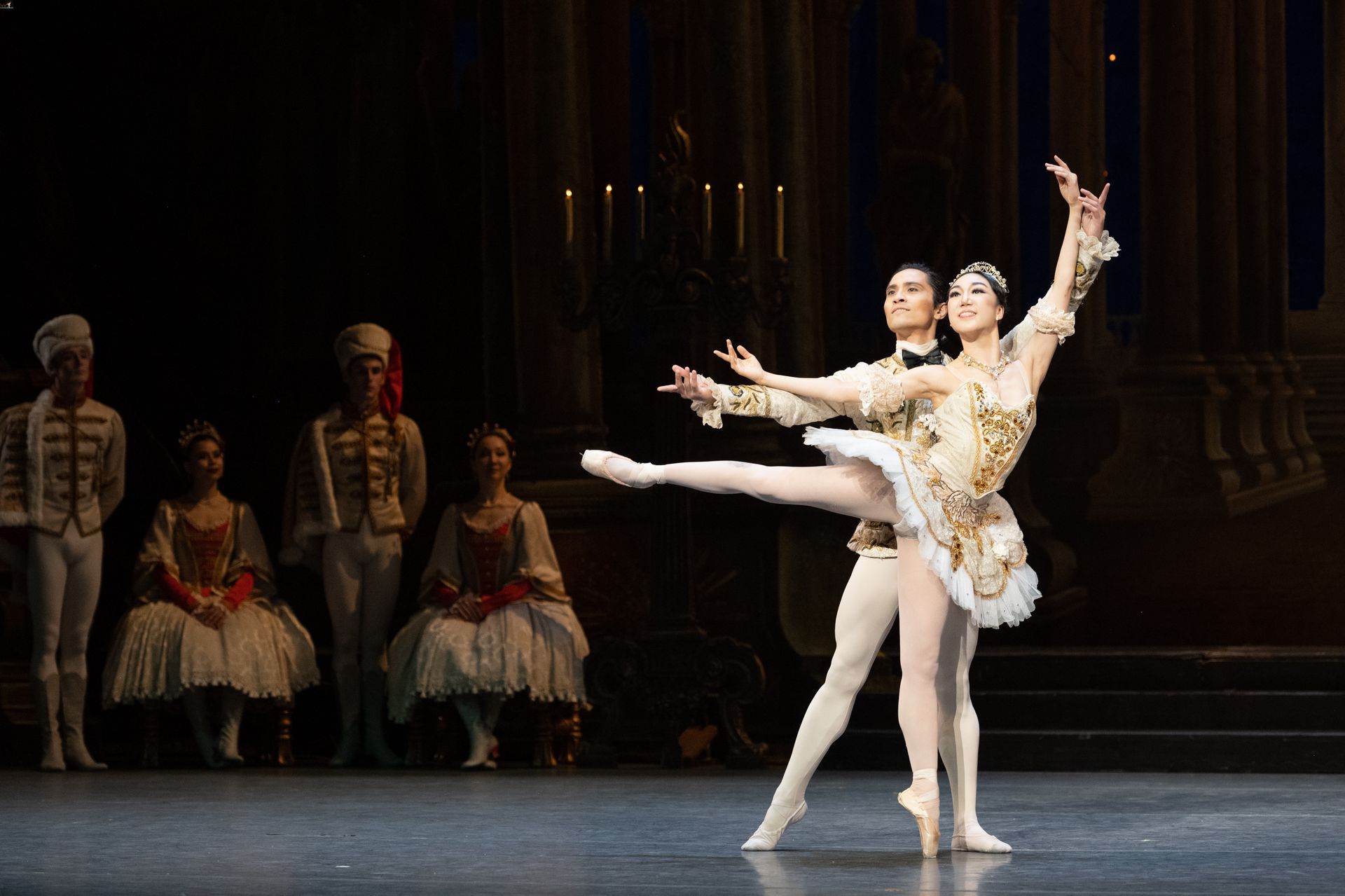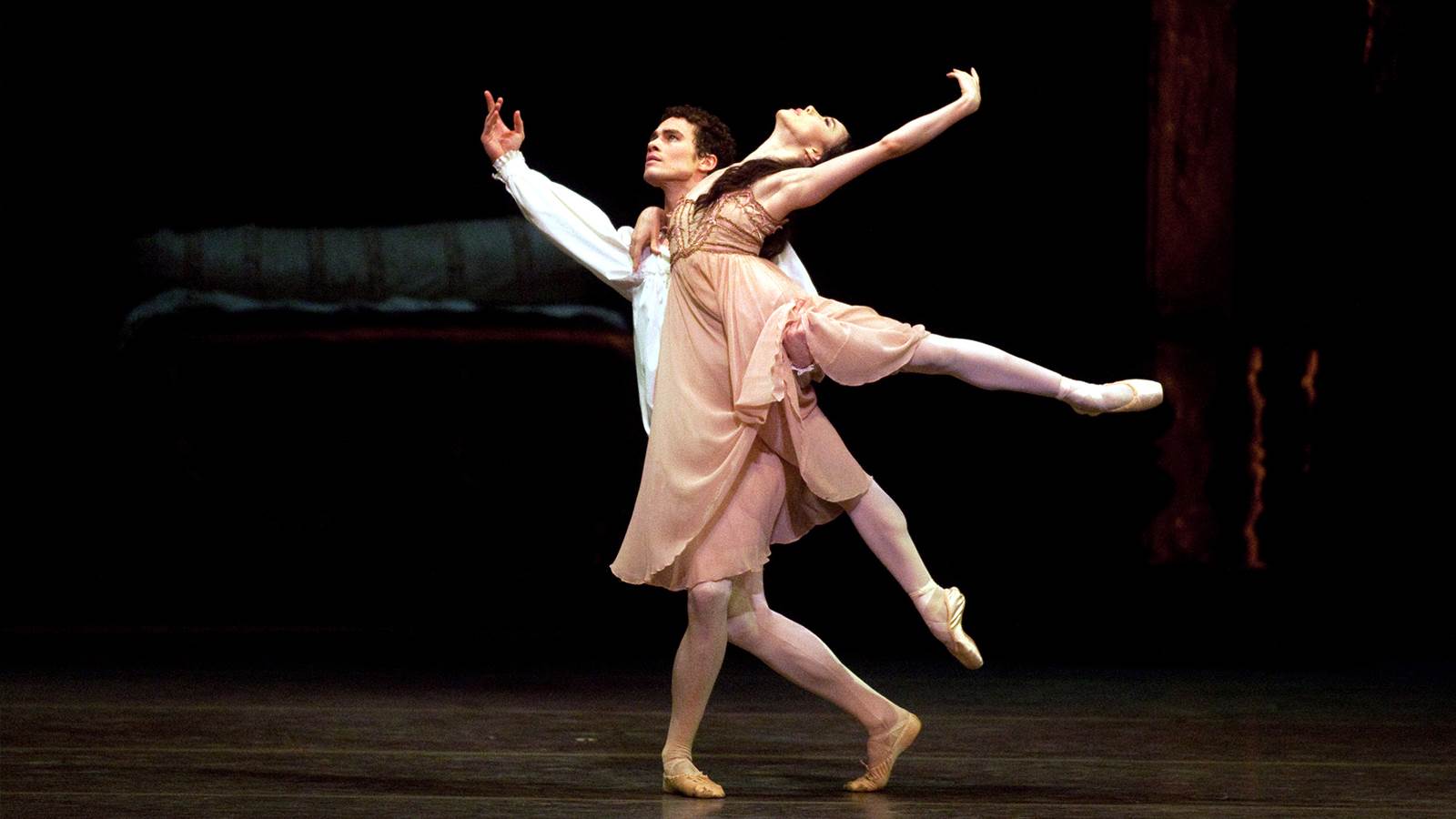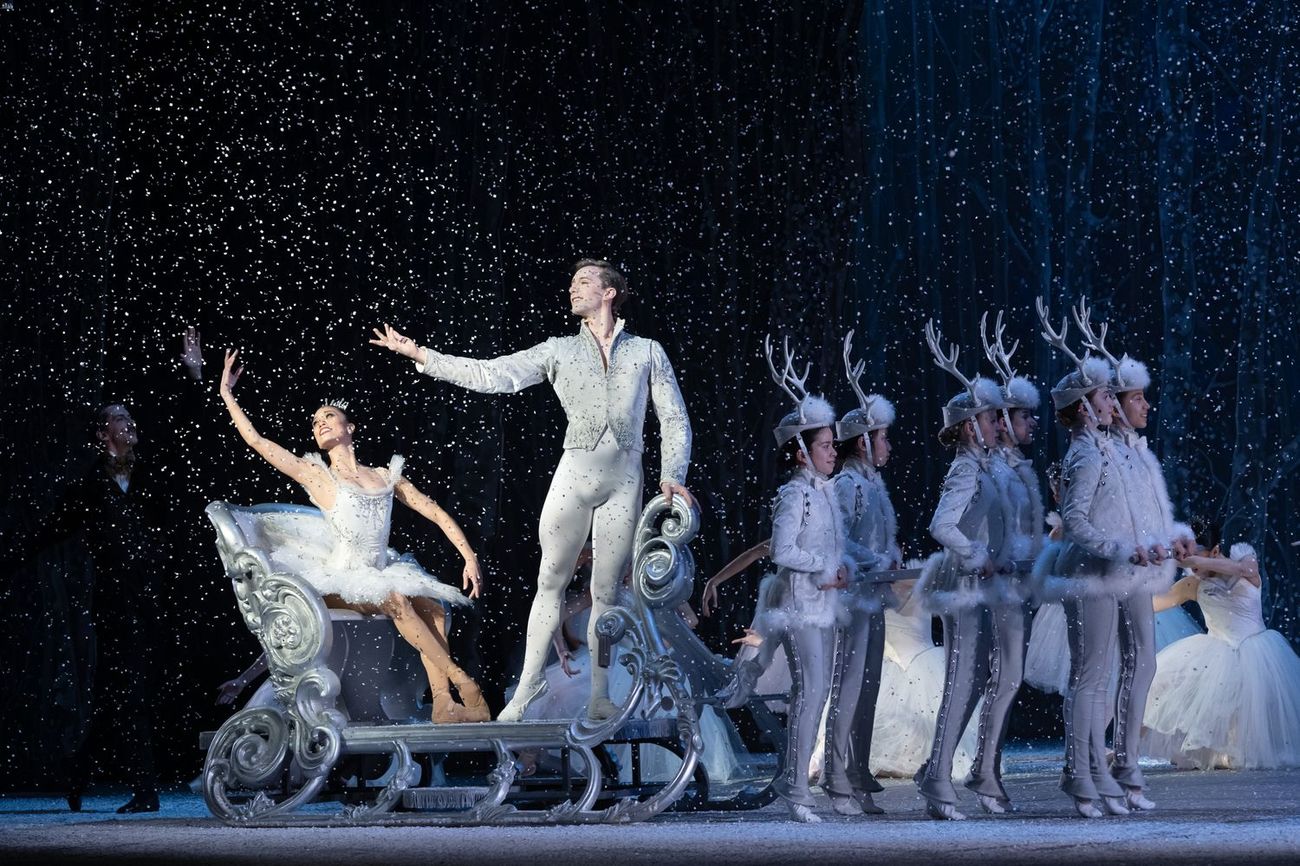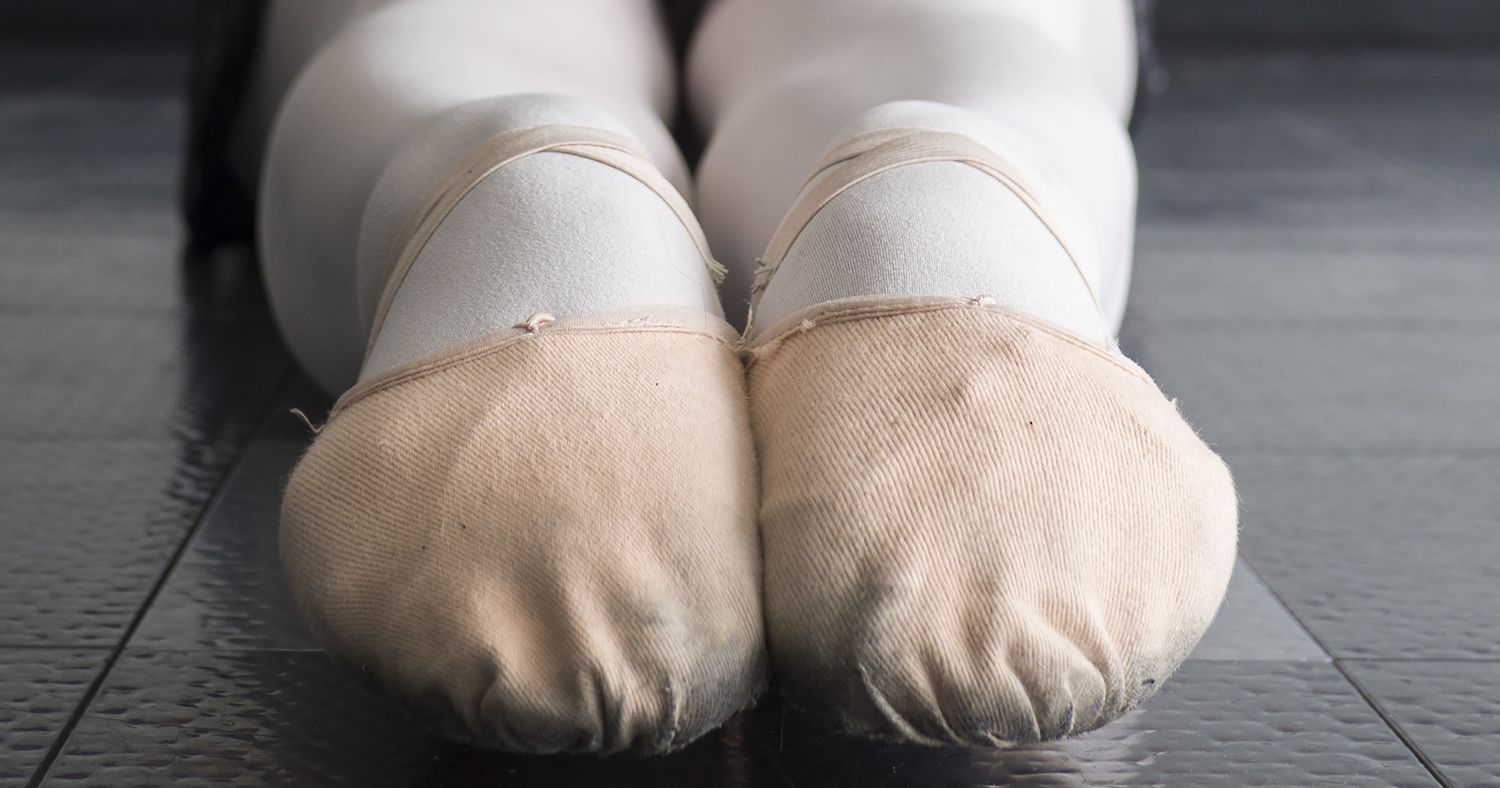Home>Events & Info>Ballet>How Long Is Firebird Ballet


Ballet
How Long Is Firebird Ballet
Modified: January 22, 2024
Learn about the length of Firebird Ballet and its captivating beauty. Immerse yourself in the enchanting world of ballet and witness its timeless grace.
(Many of the links in this article redirect to a specific reviewed product. Your purchase of these products through affiliate links helps to generate commission for AudioLover.com, at no extra cost. Learn more)
Table of Contents
Introduction
The Firebird ballet is a mesmerizing and breathtaking production that has captured the hearts of audiences around the world. With its enchanting story, magnificent choreography, and captivating music, this ballet continues to inspire and enthrall both ballet enthusiasts and newcomers to the art form.
First premiered in Paris in 1910, the Firebird ballet was a collaboration between three exceptional artists: choreographer Michel Fokine, composer Igor Stravinsky, and the legendary Ballets Russes company. Since its debut, the Firebird ballet has become one of the most significant and beloved works in the ballet repertoire.
The ballet tells the story of Prince Ivan, who enters an enchanted garden and encounters the Firebird, a powerful and magical creature. The Firebird’s gift to Prince Ivan is a magical feather that grants him protection and assistance. As the story unfolds, Prince Ivan crosses paths with the evil sorcerer Kaschei and falls in love with a beautiful princess, leading to a thrilling and ultimately uplifting climax.
The Firebird ballet is a perfect blend of dance, music, and storytelling. The choreography is characterized by its athletic movements, intricate footwork, and expressive gestures. The music, composed by Stravinsky, is a masterpiece in its own right, with sweeping melodies and intricate rhythms that perfectly complement the dramatic and emotional journey of the ballet.
What sets the Firebird ballet apart from other productions is its unique use of sets, costumes, and visual effects. The fantastical elements of the story are brought to life through elaborate stage designs and stunning costumes, immersing the audience in a world of magic and enchantment.
Over the years, the Firebird ballet has been performed by countless ballet companies worldwide, each adding their own interpretation and flair to the production. From grand stages in metropolitan cities to intimate theaters in small towns, the Firebird ballet continues to captivate audiences of all ages and backgrounds.
In this article, we will explore the history of the Firebird ballet, delve into the captivating storyline and characters, and discuss the various interpretations and variations of this timeless masterpiece. So, sit back, relax, and let the magic of the Firebird ballet sweep you off your feet.
History of Firebird Ballet
The Firebird ballet has a rich and fascinating history that dates back over a century. It all began in 1909, when Sergei Diaghilev, the renowned impresario, founded the Ballets Russes in Paris. Diaghilev had a vision of creating a company that would showcase the best of Russian ballet and bring it to audiences around the world.
One of the first ballets Diaghilev commissioned was the Firebird, and he assembled a team of exceptional artists to bring this vision to life. Choreographer Michel Fokine, known for his innovative and expressive style, was chosen to create the ballet’s movements and storytelling. Composer Igor Stravinsky, a young and promising talent, was tasked with composing the music.
The Firebird ballet premiered on June 25, 1910, at the Theatre National de l’Opera in Paris. The ballet was an immediate success, with both the audience and critics praising its originality, vibrant choreography, and imaginative storytelling. It marked the beginning of an iconic collaboration between Fokine, Stravinsky, and the Ballets Russes, which would continue to produce groundbreaking works in the years to come.
The inspiration for the Firebird ballet came from Russian folklore and fairy tales. The story revolves around Prince Ivan, who stumbles upon an enchanted garden inhabited by magical creatures. He encounters the Firebird, a radiant and powerful bird that possesses the ability to grant wishes. The ballet follows Prince Ivan as he navigates through a series of captivating encounters with evil spirits and an evil sorcerer named Kaschei.
Throughout the years, the Firebird ballet has undergone various revisions and reinterpretations by different choreographers and companies. Fokine’s original choreography was known for its expressive movements, strong storytelling, and use of intricate footwork. However, subsequent productions have introduced new elements and variations to the ballet, keeping it fresh and relevant for modern audiences.
One notable aspect of the Firebird ballet is its impact and influence on the advancement of ballet as an art form. Fokine’s choreography broke away from the rigid and conventional movements of classical ballet, introducing a more expressive and emotionally-driven style. This innovation laid the foundation for future ballets and choreographers, inspiring new approaches to storytelling and movement.
Today, the Firebird ballet continues to be performed by prestigious ballet companies worldwide, enchanting audiences with its timeless story and stunning visuals. It remains a testament to the artistic collaboration between Fokine and Stravinsky, and a testament to the enduring power and magic of ballet. The Firebird ballet is a true masterpiece that has captivated and continues to captivate audiences with its enchanting tale, beautiful music, and mesmerizing performances.
Synopsis of Firebird Ballet
The Firebird ballet takes audiences on a captivating journey through a world of enchantment, love, and triumph over evil. Set in an enchanted garden, the ballet follows the story of Prince Ivan, who encounters a majestic and magical creature, the Firebird.
The ballet begins with Prince Ivan wandering into the enchanted garden, where he discovers the Firebird. Intrigued by her beauty and grace, he attempts to capture her. However, the Firebird is not easily caught, and she uses her magical powers to escape his clutches. In gratitude for sparing her life, the Firebird gifts Prince Ivan with a magical feather that will come to his aid in times of need.
As the ballet unfolds, Prince Ivan encounters a group of beautiful princesses who have been held captive by the evil sorcerer Kaschei. Among the princesses, he falls in love with a captivating princess, further deepening his commitment to freeing them from Kaschei’s spell.
With the help of the Firebird and her magical feather, Prince Ivan embarks on a daring quest to confront Kaschei and break the spell that holds the princesses captive. The story soon escalates into a battle between Prince Ivan and Kaschei, with the Firebird supporting Prince Ivan in his quest for victory.
In a gripping finale, Prince Ivan discovers Kaschei’s source of power: a magical egg. He destroys the egg, breaking the spell and freeing the princesses from their captivity. The ballet concludes with a joyous celebration, as Prince Ivan and the princesses rejoice in their newfound freedom and their love for one another.
The Firebird ballet is not only a beautiful and fantastical spectacle, but it also carries themes of bravery, love, and the triumph of good over evil. The choreography, music, and storytelling work in harmony to evoke a range of emotions in the audience, from awe and wonder to suspense and jubilation.
Through its mythical and magical narrative, the Firebird ballet invites audiences to embrace the power of imagination and the enduring belief in the triumph of love and goodness. It serves as a reminder of the transformative and uplifting nature of ballet, capturing the hearts of both young and old with its timeless and enchanting tale.
Collaboration with Music Composer
The Firebird ballet is renowned not only for its exquisite choreography but also for its captivating music, composed by the legendary Igor Stravinsky. The collaboration between choreographer Michel Fokine and composer Igor Stravinsky played a crucial role in the success and enduring legacy of the Firebird ballet.
When Sergei Diaghilev, the founder of the Ballets Russes, commissioned the Firebird, he turned to Stravinsky, then a relatively unknown composer, to create the score. Stravinsky embraced the opportunity and worked closely with Fokine to bring the ballet to life through his musical composition.
Stravinsky’s score for the Firebird ballet is characterized by its rich melodies, vibrant orchestration, and evocative harmonies. It captures the essence of the story, creating a magical and dramatic atmosphere that enhances the emotional impact of the dancers’ movements.
The collaboration between Fokine and Stravinsky was marked by a deep understanding of each other’s artistic visions. Fokine’s choreography inspired Stravinsky’s musical compositions, and in turn, Stravinsky’s music influenced and enhanced Fokine’s choreographic choices. The synergy between dance and music was evident in their work, resulting in a harmonious and seamless fusion of the two art forms.
Stravinsky’s score for the Firebird ballet incorporates a wide range of musical elements, from delicate and lyrical passages to powerful and rhythmic motifs. The music reflects the various characters and scenes in the ballet, from the ethereal and enchanting melodies associated with the Firebird to the haunting and menacing themes representing Kaschei and his spell.
The Firebird ballet showcases Stravinsky’s innovative use of orchestration and his ability to create contrasting moods and atmospheres. His music enhances the storytelling, allowing the dancers to embody the emotions and actions of the characters they portray on stage.
With the success of the Firebird ballet, the collaboration between Fokine and Stravinsky continued on future projects with the Ballets Russes, including the iconic ballet, The Rite of Spring. Together, Fokine and Stravinsky pushed the boundaries of ballet and music, creating groundbreaking and groundbreaking works that revolutionized the art form.
The collaboration between the choreographer and the composer is a testament to the power of synergy in the creative process. Fokine’s brilliant choreography combined with Stravinsky’s innovative musical compositions led to a ballet that showcased the strengths of both artists and became a defining work in the ballet repertoire.
The Firebird ballet remains a testament to the enduring legacy of Fokine and Stravinsky’s collaboration. Their joint contributions to the ballet world continue to captivate and inspire audiences worldwide, showcasing the transformative power of dance and music when brought together in harmonious artistic expression.
Length of Firebird Ballet Performances
The length of Firebird ballet performances can vary depending on several factors, including the specific choreography, pacing of the production, and individual artistic interpretation. While there is no fixed duration for the ballet, most performances fall within a certain range, ensuring an immersive and engaging experience for the audience.
On average, a typical Firebird ballet performance lasts approximately 90 minutes to 2 hours, including a 15 to 20-minute intermission. However, it is important to note that this duration can vary slightly based on the artistic choices of the choreographer and the company performing the ballet.
The first act of the Firebird ballet usually spans around 40 to 50 minutes. It introduces the audience to the enchanted garden setting, Prince Ivan’s encounter with the Firebird, and the unfolding of the story as Prince Ivan navigates through various challenges and encounters with Kaschei and the princesses.
The second act, also known as the grand finale, is usually shorter in duration, ranging from 30 to 40 minutes. This act features the climactic battle between Prince Ivan and Kaschei, the magical destruction of the sorcerer’s egg, and the joyful resolution and celebration that follow.
While maintaining the integrity of the narrative and the essence of the ballet, individual productions may have slight variations in terms of pacing and duration. Some companies may choose to emphasize certain elements of the story, adding or extending scenes to highlight specific characters or thematic elements.
It is worth noting that ballet companies also consider the overall audience experience when determining the length of their performances. While the Firebird ballet is known for its captivating storyline and stunning visuals, it is important to strike a balance between an engaging performance and the audience’s comfort.
The duration of Firebird ballet performances is carefully crafted to ensure that audiences are captivated from start to finish without feeling fatigued or overwhelmed. The ballet’s narrative structure, combined with the dynamic choreography and Stravinsky’s music, creates a fully immersive experience, captivating viewers throughout the performance.
Whether you are a ballet connoisseur or new to the art form, attending a Firebird ballet performance promises to be an enchanting journey filled with beautiful movements, breathtaking visuals, and a captivating story. The duration of the ballet allows for a complete and immersive experience, leaving audiences in awe of the artistry and magic that unfolds on stage.
Variations and Interpretations of Firebird Ballet
Throughout its long history, the Firebird ballet has undergone various variations and interpretations, with choreographers and companies adding their unique artistic flair to this beloved production. These creative adaptations have allowed the Firebird ballet to evolve and remain relevant in the ever-changing landscape of the ballet world.
One notable aspect of the Firebird ballet is its adaptability, which makes it open to reinterpretation while still maintaining the core elements of the story. Choreographers have approached the ballet with their distinct artistic perspectives, breathing new life into the narrative and exploring different facets of the characters and their relationships.
One common variation of the Firebird ballet is seen in the interpretation of the Firebird herself. While traditionally portrayed as a mystical and ethereal creature, some productions have chosen to emphasize her role as a symbolic representation of nature or life force. This reinterpretation adds depth and layers to her character, connecting her more closely to the natural world and the elemental forces at play.
Another aspect that choreographers often explore is the relationship between Prince Ivan and the Firebird. Some interpretations highlight a deeper emotional connection between the two, exploring themes of love, trust, and their shared journey towards liberation. These variations add a romantic dimension to the ballet, heightening the emotional stakes and creating a more nuanced dynamic between the characters.
Choreographers have also experimented with the visual elements and aesthetics of the Firebird ballet. Set designs, costumes, and lighting choices can drastically impact the overall ambiance and mood of the production. Some interpretations may opt for a minimalist approach, focusing on the dancers’ movements and interactions, while others may embrace a more elaborate and fantastical aesthetic to fully immerse the audience in the magical world of the ballet.
In addition to these artistic variations, different ballet companies may bring their own unique flair to the Firebird ballet. Each company has a distinctive style and interpretation, influenced by their cultural backgrounds and artistic traditions. This diversity of interpretations allows audiences to experience the Firebird ballet in new and exciting ways, celebrating the richness and breadth of the ballet art form.
Collaboration with renowned guest artists and musicians also breathes new life into the Firebird ballet. Contemporary choreographers may collaborate with composers to create new musical arrangements, adapting Stravinsky’s original score or introducing new compositions that enhance the emotional impact of the ballet.
Whether it’s through reinterpretations of characters, innovative staging, or collaborations with other artists, the variations and interpretations of the Firebird ballet showcase the enduring power and adaptability of this timeless masterpiece. Each production offers a fresh perspective, keeping the ballet relevant and captivating for new generations of audiences.
Ultimately, the beauty of the Firebird ballet lies in its ability to transcend time and boundaries. It continues to inspire dancers, choreographers, and audiences worldwide, encouraging artistic exploration and inviting us to experience the magic and wonder of this remarkable ballet in new and unexpected ways.
Conclusion
The Firebird ballet is a true gem in the world of dance, captivating audiences with its enchanting storyline, breathtaking choreography, and captivating music. The collaboration between choreographer Michel Fokine and composer Igor Stravinsky gave birth to a timeless masterpiece that continues to captivate and inspire audiences worldwide.
From its premiere in 1910 to the present day, the Firebird ballet has seen numerous variations and interpretations, each adding its unique artistic flair to the production. Whether through innovative choreography, visual aesthetics, or reimagined character dynamics, these interpretations breathe new life into the ballet, ensuring its relevance and appeal in the ever-evolving world of the arts.
The Firebird ballet’s enduring popularity can be attributed to its ability to transport audiences into a world of magic, love, and triumph over evil. The captivating narrative, intricate choreography, and memorable music all work in harmony to create a fully immersive and unforgettable experience.
Furthermore, the Firebird ballet serves as a testament to the power of collaboration between choreographers, composers, dancers, and designers. The seamless fusion of dance, music, and storytelling results in a harmonious and transcendent artistic expression that moves and inspires audiences on a profound level.
Whether you are a seasoned ballet enthusiast or a newcomer to the art form, the Firebird ballet offers an experience that is both visually stunning and emotionally engaging. Its universal themes of love, bravery, and the triumph of good over evil resonate with audiences of all ages and backgrounds.
The Firebird ballet continues to be performed by prestigious ballet companies around the world, enchanting and inspiring audiences with each rendition. Its timeless appeal lies in its ability to transport us to a world of magic and wonder, reminding us of the transformative power of art and the enduring beauty of the ballet.
So, whether you have the opportunity to witness a classical production or experience a modern reinterpretation of the Firebird ballet, let yourself be swept away by the elegance, grace, and enchantment of this extraordinary masterpiece. Allow the mystical Firebird to ignite your imagination, and let the power of the ballet’s music and movement transport you into a realm where anything is possible.

